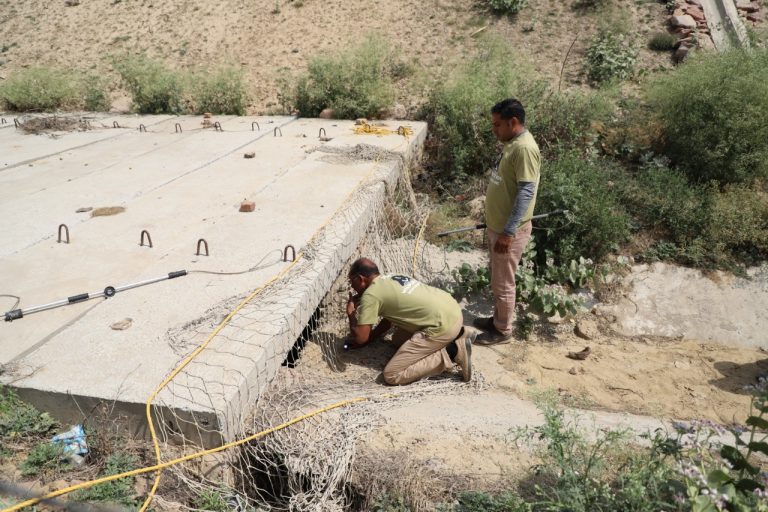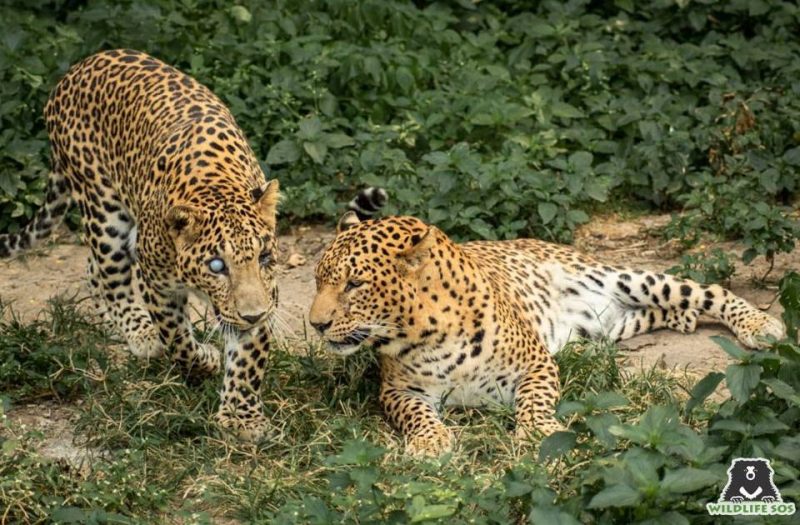A most commonly observed phenomenon – man animal conflict – has been one of the biggest challenges to conservation efforts in the twenty-first century. For wildlife conservation organizations like Wildlife SOS, it is a frequent occurrence to chance upon such cases– countless animals like hyenas, elephants, leopards and bears have been rescued from varying situations of discord.

So, what is man-animal conflict?
Man-animal conflict revolves around the struggle over territory and battles of survival. Increasing deforestation and urbanisation leads to rising interaction between wild animals and humans, in turn increasing pressure on people, resources and habitats. When growing human populations overlap with established wildlife territory, the competition for space and resources leads to rising cases of ‘man-animal conflict’.
Almost every country in the world experiences some form of conflict, and highly biodiverse, developing countries like India particularly struggle with this issue. With a majority of its population living near forest fringes, India witnesses dramatic instances of friction between people and wildlife. Increasing habitat loss and fragmentation of corridors animals have used for centuries has led to a spurt in cases in recent decades. From pregnant elephants ending up consuming fruits laced with explosives to sloth bears being chased out of agricultural lands by a hostile mob or leopards falling prey to snare traps, more and more gruesome cases find their way to the light.
What are the measures being taken to reduce conflict?
The creation of protected areas within forested spaces, apt compensations for people negatively impacted by conflict and community education, participation and awareness are some of the steps taken to mitigate conflict.
Local communities residing close to forest areas commonly use scare devices, patrol fields during the night, and erect fences to ward off wild animals. The construction of barriers within farmlands to discourage wild animals from raiding crops or preying on livestock is also an effective proposal. Researchers also propose using guard dogs and encouraging people not to graze livestock inside forest reserves and/or penalizing them for it as a viable alternative to minimize livestock losses.

Challenges to mitigating wildlife conflict:
An important thing to understand when it comes to conflict is that it has a negative impact on both humans and wild animals. Intensive crop damage and the increasing frequency of animal attacks on both humans and their cattle have made communities less tolerant towards wildlife. Mitigation of conflict largely depends on community participation which makes it incredibly important that communities understand the importance of building tolerance towards those animals that share the landscape.
Additionally, vulnerable communities living on the edge of forests need more intervention and support. Most people living in these areas lack awareness of the schemes that governments have in place with respect to compensation for losses. Encouraging non-lethal mitigation strategies towards wild animals can also yield positive results; for example, beehives, chilli powder and the like.
While the creation of protective spheres is a necessary and important measure, this poses a challenge in the form of the limitation for resources. Most protected animals like big cats, elephants etc require hundreds of kilometers of undisturbed space to thrive, and the inadequate constraints within our protective spaces create conditions where the animals exit the boundaries of these reserves to forage.

Examples of conflict that Wildlife SOS frequently deals with:
Many of the animals under our care have their stories directly rooted in the throes of conflict. We started a 24 hour animal rescue hotline in the Delhi National Capital Region (NCR), Agra and Vadodara, the main function of which is to help mitigate man-animal conflict situations. The Wildlife SOS Rapid Response Unit works ceaselessly towards protecting snakes, hyenas, leopards, crocodiles and many other animals from such situations. Considering the lack of awareness towards many species, these animals fall prey to hostile mobs when stuck within limited spaces.
Vitthal, a geriatric leopard under our care, was rescued from a snare trap, an insidious and brutal method of trapping animals. Ganesh on the hand was severely injured and blinded during a conflict situation.

Often, non-venomous Rat snakes and Pythons – both of which resemble their venomous counterparts Cobra and Russell’s Viper snakes – fall prey to ignorance and end up losing their lives to hysteria. Wildlife SOS rushes to the rescue of many such animals on a daily basis.
We also work towards mitigating conflict via our project – Human- Elephant Conflict Mitigation project in Chhattisgarh– the goal being to develop an Early Warning System (EWS) to make the area in Mahasamund, Chhattisgarh safe and conducive for elephants and humans. This involved the radio-collaring of the matriarch of a wild elephant herd, the creation of local volunteer group Haathi Mitra Dal to assist in mitigating conflict and the usage of bulk text messages and methods like chilli smoke to keep the elephant herd away from farmlands.

One of the many conflict scenarios wild animals face is the increasing dependency on the availability of easy food in fringe areas. This leads to wild animals losing the survival instincts they have honed over years and makes it that much harder for them to survive in the wilderness. Nawab, one of the Himalayan Brown bears under our care, was also the victim of a similar situation.
In 2015, the Agra Development Authority and the Agra District Administration partnered with Wildlife SOS and launched ‘The Human Primate Conflict Mitigation Project ‘to tackle the exploding population of rhesus macaques in the city of Agra. The main objective of this project is to capture and sterilize rhesus monkeys in troops from the high intensity conflict areas of Agra and release the animals back to the very same area.
Our long-term plan is for people to understand and spread awareness that we can co-exist peacefully with other species. If you come across any wild animal in distress in the following cities, please alert our rescue team on these numbers as soon as possible!
Delhi NCR – +91-9871963535
Agra & Mathura in Uttar Pradesh – +91-9917109666
Vadodara, Gujarat – +91-9825011117





